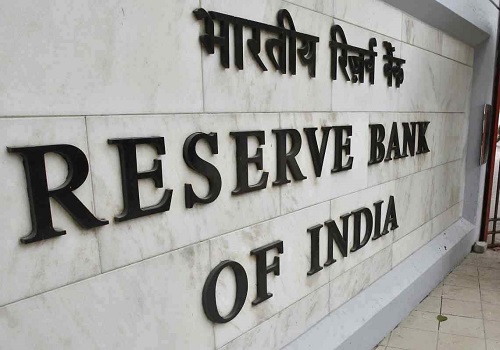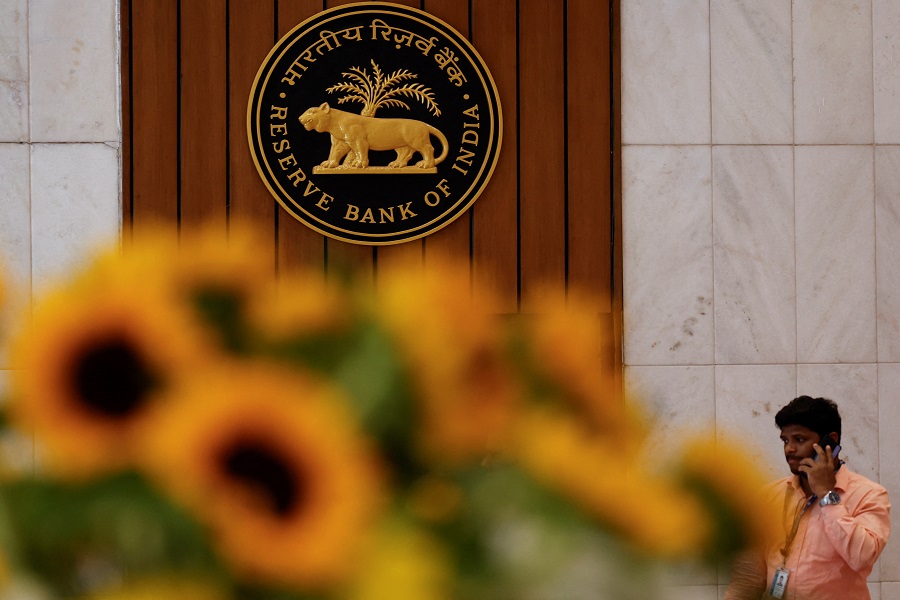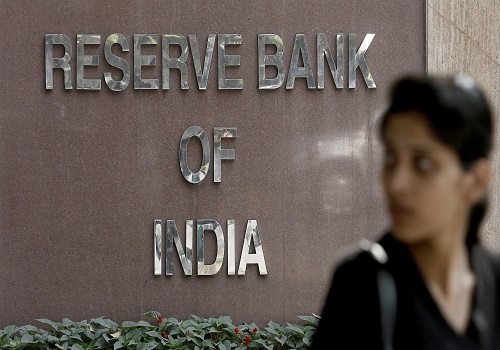Alpha Strategist February 2025 by Motilal Oswal Private Wealth Management

Executive Summary
The global financial as well as geopolitical landscape is witnessing significant changes, driven by evolving macroeconomic trends and policy decisions.
One of the key shifts is the rise in the U.S. interest rates, influenced by factors such as rising fiscal deficit, persistent inflation, and uncertainty surrounding Trump’s policies. This is of significance because yields are persisting at levels last seen during 2007-08 period and markets expect yields to remain higher for longer as indicated by Fed Futures probabilities. Japan, another major economy and an important carry trade participant, seems to be also on the path for higher rates after a period of ultra-loose monetary policy for more than 15 years.
Second major change is the move towards deglobalization as evident from the recent imposition of tariffs by U.S., aimed at protecting domestic interests. While the current announcements are milder than anticipated and seem more like a negotiation strategy, such actions will lead to disruptions in global trade and further fuel the momentum towards deglobalization.
Rising fears of global trade war amidst increasing likelihood of higher-for-longer interest rates have strengthened the Dollar Index to above 108 levels, triggering risk-off mode and FII outflows from emerging markets. INR has also depreciated ~4% since Sep'24 and almost touched the 88 mark before RBI intervention got rupee back below 87.
Indian Union budget highlighted continuous focus on fiscal prudence by targeting 4.4% fiscal deficit for FY26 (vs 4.8% in FY25RE). However this time, by providing the income tax cuts, government has given preference to consumption boost over capital expenditure – a shift from the earlier budgets. This move is one of the biggest in terms of tax forgone due to income tax cut by the exchequer and is likely to result in additional ~1 Lac Crs in the hands of the taxpayer. We expect this to provide the much needed boost to consumption demand from middle class salaried population.
These Changing Norms – Higher-for-longer interest rates, Deglobalization gaining momentum and Govt of India’s shift from Capex to Consumption underscore the emerging trends which are significantly different from what investors witnessed in the last decade and hence highlight the need for adaptive strategies in navigating financial markets today.
Amidst these uncertainties, Indian equity markets have seen sharp corrections due to continuous FII outflow, rising US Yield and weak earnings growth. Individual stock level correction is much more severe than indices suggest as average price fall in stocks from the all-time high is almost twice the index fall. ~75% stocks from Mid Cap 150 & Small Cap 250 Index are down by more than 20% from all-time high. However, despite corrections, Mid Cap and Small Cap valuations continue to remain expensive, while Large Caps look more reasonable trading below the 10 year average forward PE multiple.
We expect the markets to remain in the such corrective to consolidation phase for the next 3 to 4 months and such phases of the market should be considered for gradual accumulation. For equity, investors can increase allocation by implementing a lump sum investment strategy for Hybrid & Large Cap Equity Oriented fund and staggered approach over the next 6 months for Flexi, Mid and Small Cap Strategies.
On fixed income, Govt's commitment to fiscal consolidation path resulting in flat net borrowing and RBI's OMO purchase are likely to keep yields under check from demand supply perspective. However Yield Gap between US 10 Yr and India 10 Yr is at ~220 bps vs long term average of ~400-450 bps and there is very little room for the spread to compress further.
After a softening of ~60 bps during last 1-1.5 years, we believe that the duration play is in its last leg and long term yields to remain higher for longer and hence duration can be exited fully. Actions by RBI on rate cuts and liquidity, are likely to result into steepening in yield curve. We recommend fixed income portfolio to be Overweight on Accrual Strategies.
The inverse correlation between US 10 year real rate & Gold prices (USD) seems to have broken due to increasing uncertainty and world moving away from US treasuries & towards Gold. Investment in Gold should be done from the asset allocation point of view.
Asset Class Performance

Period of Analysis is from 1990 to 31st Jan’25. Indices used: Equity is represented by Sensex from 1990 to 2002 and Nifty 50 from 2002 onwards Debt is represented by SBI 1-yr FD rates from 1990 to 2002 and CRISIL Composite bond Index from 2002 onwards Liquid/Cash is represented by SBI 3-month FD rates from 1990 to 2002 and CRISIL Liquid fund Index from 2002 onwards; Gold is represented by Gold USD Spot Price conversion into INR from 1990 to 2005 and MCX Spot Gold price in INR from 2006 till date; Equity US is represented by S&P 500 in INR terms
Average: Source: AceMF; Bloomberg. Disclaimer :Past Performance is no guarantee of future Results
Asset Classes Perform Differently Over Market Cycles


In Investing, every asset class are cyclical in nature influenced by macro/micro factors Hence, Winners keep Changing
For 2021 Returns are consider till 31s Dec’21. Equity-IND is represented by Sensex from 1990 to 2002 & Nifty50 from 2002 onwards; Debt is represented by SBI 1-yr FD rates from 1990 to 2002 & CRISIL Composite Bond Fund Index from 2002 onwards; Cash is represented by SBI 3-month FD rates from 1990 to 2002 & CRISIL Liquid Fund Index from 2002 onwards; Gold is represented by Gold USD Spot Price conversion into INR from 1990 to 2005 and MCX Spot Gold price in INR from 2006 till date Equity-US is represented by S&P 500 in INR terms;
Period Considered for CAGR analysis is 4 & 5 years
Source: AceMF, Bloomberg, 2021 performance till 31st Dec.
Disclaimer :Past Performance is no guarantee of future Results
Asset Class Performance
Exhibit Low Correlation to Each Other

Period of Analysis is from 1990 to 31st Jan’25. Indices used: Equity is represented by Sensex from 1990 to 2002 and Nifty 50 from 2002 onwards Debt is represented by SBI 1-yr FD rates from 1990 to 2002 and CRISIL Composite bond Index from 2002 onwards Liquid/Cash is represented by SBI 3-month FD rates from 1990 to 2002 and CRISIL Liquid fund Index from 2002 onwards; Gold is represented by Gold USD Spot Price conversion into INR from 1990 to 2005 and MCX Spot Gold price in INR from 2006 till date; Equity US is represented by S&P 500 in INR terms
Average: Source: AceMF; Bloomberg. Disclaimer :Past Performance is no guarantee of future Results
Long Term Asset Combinations Performance – 3Y Rolling Returns

*CAGR is for period 1990 to 31st Jan’2025. Equity-IND is represented by Sensex from 1990 to 2002 and Nifty 50 from 2002 onwards; Debt is represented by SBI 1-yr FD rates from 1990 to 2002 and CRISIL Composite bond Index from 2002 onwards; Cash is represented by SBI 3-month FD rates from 1990 to 2002 and CRISIL Liquid fund Index from 2002 onwards; Gold is represented by gold spot price in INR terms. Equity-US is represented by S&P 500 in INR terms; Source: AceMF; Bloomberg
* Maximum Drawdowns are based on absolute returns and the period considered is from CY2000 onwards
Disclaimer: Past Performance is no guarantee of future Results
Long Term Investing
It is common knowledge that investments, when given time to grow, have a much higher chance of reaching their full potential. One of the most successful and well known investors, Peter Lynch, once mentioned “You get recessions, you have stock market declines, if you don't understand that's going to happen, then you're not ready, you won't do well in the markets”. Even though these scenarios mentioned are known to investors, why are they not able to ride through the cycle? The problem arises when personal capital is invested, as it is simple human nature to notice every small turbulence that depletes one's capital. Initially an investor may be able to comprehend the situation, but when the bear market last months or even years, portfolio profits and even capital begin to erode. This is when for most investors, patience begins to wear thin and fear sets in. In such a mindset, investors end up making impulsive decisions that are solely based on emotions without realizing that they are doing themselves more harm than good. Therefore we believe that the key ingredient to healthy investment portfolios is to have a long term vision.
The most common question that then arises is: how long is long term? When it comes to computation of tax on capital gains, long term is considered as a holding period of one year for equities and a period of two years for debt instruments. However, from an investment perspective one year is considered as a very short period of time since volatility can be very high and the investor could suffer losses. The fundamental reason for investing for a long period of time is to deal with volatility, which can never be predicted. This is why many successful managers strongly believe in the philosophy of 'Time in the market' as opposed to 'Timing the Market'. In hindsight, even if the entry point might have been wrong, positive returns can still be made by patiently holding onto the investments and benefitting from the subsequent rally. Some managers even try to improve their returns by increasing their investments in periods which are negative or low return phases.
To understand the truth behind these statements, we conducted a small study that tracked the journey of the Nifty 50 Index and two actively managed funds in the last 29 years. We assumed 29 separate investments in each of the funds at the start of every calendar year. The study yielded some very fascinating discoveries of the equity markets.

Disclaimer: Past performance may or may not sustain in the future. *2025 returns are absolute and till the end of Jan'25.
Long Term Investing

Disclaimer: Past performance may or may not sustain in the future. *2025 returns are absolute and till the end of Jan'25.

Disclaimer: Past performance may or may not sustain in the future. *2025 returns are absolute and till the end of Jan'25.

Disclaimer: Past performance may or may not sustain in the future. *2025 returns are absolute and till the end of Jan'25.

Disclaimer: Past performance may or may not sustain in the future. *2025 returns are absolute and till the end of Jan'25.
Long Term Investing

Disclaimer: Past performance may or may not sustain in the future. *2025 returns are absolute and till the end of Jan'25.
In general, we noticed that negative or low return periods were perpetually followed by medium to high return periods. This observation is a simple explanation for understanding that equity returns are nonlinear and tend to be bunched in few years. Another important finding was that approximately 66.67% of the time one year absolute returns were positive. In the case of active funds, there were some further motivating discoveries. In spite of having a poor entry point and suffering negative returns in the first year, the active fund managers were successfully able to produce positive annualized returns on a 5 year period and double digit returns on a 10 year period. The conclusion that we can derive from this analysis is that compounding has a much larger effect on our investment returns than we realize and that we should not get easily spooked by negative returns as they will fade with time.
When looking at these several data points, the bear markets appear to be like minor speed bumps in a consistent rally, but this is a view in hindsight. When investors are in the thick of the fall, an atmosphere of doom gets created in the mind and it becomes very hard go against the primary instinct of selling. For example, when the Nifty 50 Index crashed 52% in CY08 only the very few investors who were able to hold their nerves and brave the storm benefitted from the 71% rally in CY09.
As Warren Buffet puts it, “The stock market is a device for transferring money from the impatient to the patient”.
For More Research Reports : Click Here
For More Motilal Oswal Securities Ltd Disclaimer
http://www.motilaloswal.com/MOSLdisclaimer/disclaimer.html
SEBI Registration number is INH000000412
























